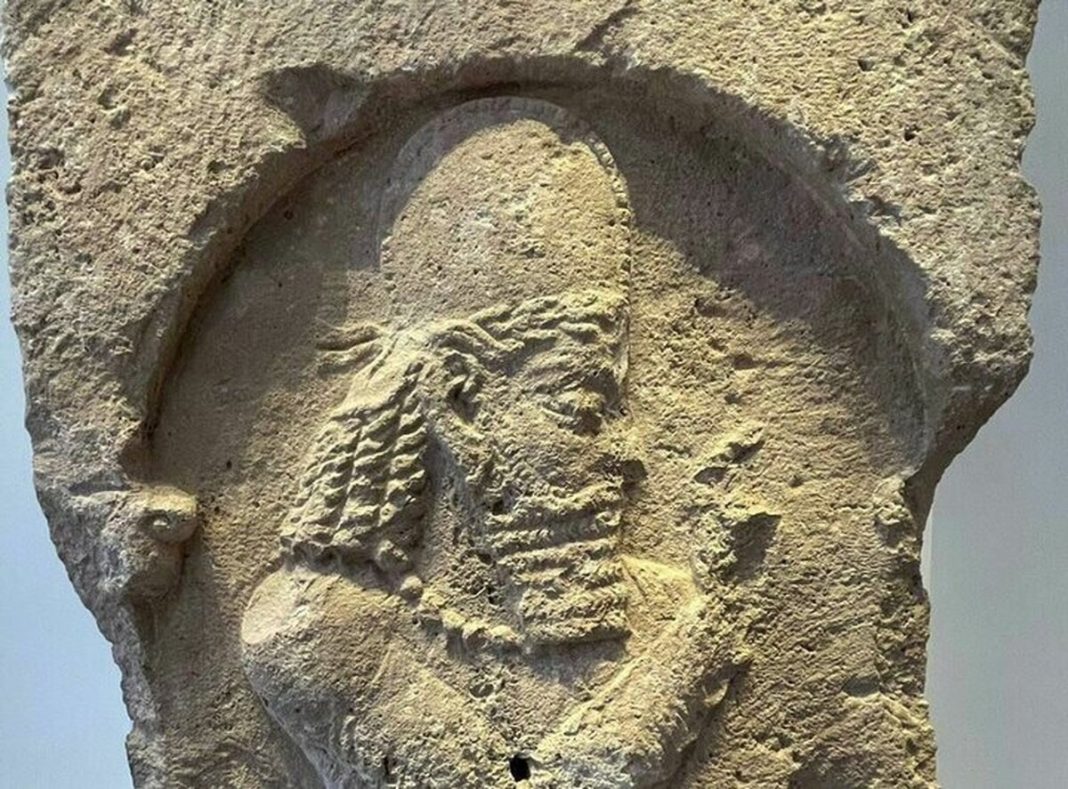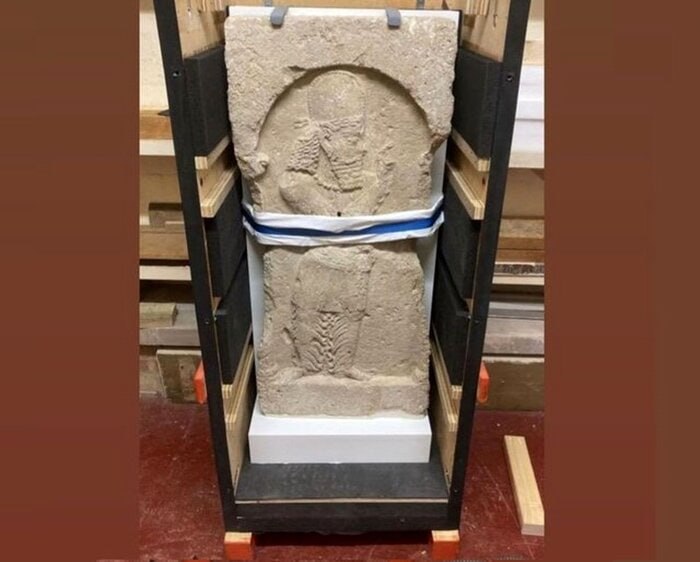This came three months after the discovery in Britain of the relief known as the Sassanid Soldier. The ancient relic was brought back to Iran on June 28, 2023 and it’s going to be put on display at the Iran National Museum.
Story of Sassanid relief’s departure from Iran
This monument which dates back to the Sassanid era was taken to the United Arab Emirates in 1988 and left the country in 2006.
The relief was however seized in Britain in 2016. The exact date of its departure from Iran is unknown. But considering the time of its arrival in the UAE, that is, in 1988, it is most likely that this work was illegally smuggled out of the country during the Iraqi imposed war in 1980-88.
British newspaper’s report on discovery of Sassanid relief
British daily The Observer on April 2, 2023 said in a report that the relief had been discovered and confiscated at Stansted Airport near London. The report also said the statue would be returned to Iran after putting on display at the British Museum.
It was carved almost 2,000 years ago and is such an important sculpture that if it appeared on the art market today, it could fetch more than £30m. But this is a previously unrecorded antiquity that can never be sold.
For the large fragment of a Sasanian rock relief – which depicts an imposing male figure carved in the 3rd century AD – has been freshly gouged from a cliff in Iran with an angle grinder. It was heading for the black market in Britain when it was seized at Stansted Airport.
Border Force officers became suspicious when they saw its haphazard packaging, perhaps intended to suggest that it was a worthless item.
The antiquity, which is over one meter in height, was hacked out of living rock or rock that has been carved in situ. St. John Simpson, a senior curator and archaeologist in the British Museum’s department of the Middle East, said: “We almost never come across a case of something being cut out of the “living rock”. He has identified it as a unique rock relief sculpture dating to the period of the Sasanian empire, AD224-651.
Other features of the Sassanid statue
Meanwhile, Mostafa Deh Pahlvan, Director of the Research Institute of Cultural Heritage and Tourism, said after the arrival of this relief in Tehran that more comparative, instrumental and laboratory investigations should be done about the monument, but preliminary studies show that it probably belongs to a nobleman of the Sassanid era.
According to Deh Pahlevan, the type of clothes and placement of the index finger (some kind of tribute) show that this statue is probably one of the great and high-ranking people of the Sassanid era. Before putting it on display in Iran, he added, this work of art should be studied carefully at a scientific session with Sassanid era culture and civilization researchers in attendance.
He noted that fortunately, this relief has returned to Iran, saying undoubtedly, more research will be done about it and its transfer to the national museum will become a new tourist attraction in Iran.



